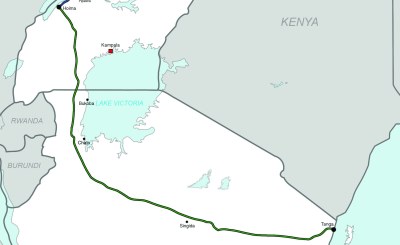-
Uganda: 'Danger Is Imminent' - Ugandans Blame EACOP Tree Clearings for Floods
African Arguments, 23 June 2023
Floods submerged farms near TotalEnergies' 700-acre industrial area. The oil major has compensated 88 people. Officials say thousands were affected. Read more »
-
Uganda: Katonga River Floods Cut Off Kampala-Masaka Highway
Nile Post, 11 May 2023
Traffic along Kampala-Masaka highway is in a state of confusion after water levels at Katonga River rose, making it hard for motorists and pedestrians to cross. Read more »
Ugandans Blame East African Oil Pipeline Tree Clearing for Floods
In 2021, TotalEnergies began constructing a 700-acre industrial area in Buliisa district despite activists raising concerns about the threats posed by the pipeline to livelihoods, sensitive ecosystems, and the climate. An initial part of the East Africa Crude Oil Pipeline (EACOP) project construction involved clearing huge swathes of trees, writes John Okot for African Arguments.
Local environmentalists and experts believe the deforestation left local residents vulnerable and negatively affected about 4,000 people. Trees hugely reduce the likelihood of flooding by slowing and reducing surface run-off as well as by storing water.
In response to concerns about the environmental impact of the 1,443km crude oil pipeline, local activists have called on Uganda's National Environment Management Authority to re-evaluate the project's Environmental and Social Impact Assessment.
InFocus
-
The planned East African Crude Oil Pipeline poses negative socio-economic and environmental impacts on communities. The Total Energies' mega project has activists raising the alarm ... Read more »
-
At least 10 people have been confirmed dead and several others are still missing after floods wreaked havoc in eastern Uganda. This follows heavy rains lasting 11 hours, that saw ... Read more »





